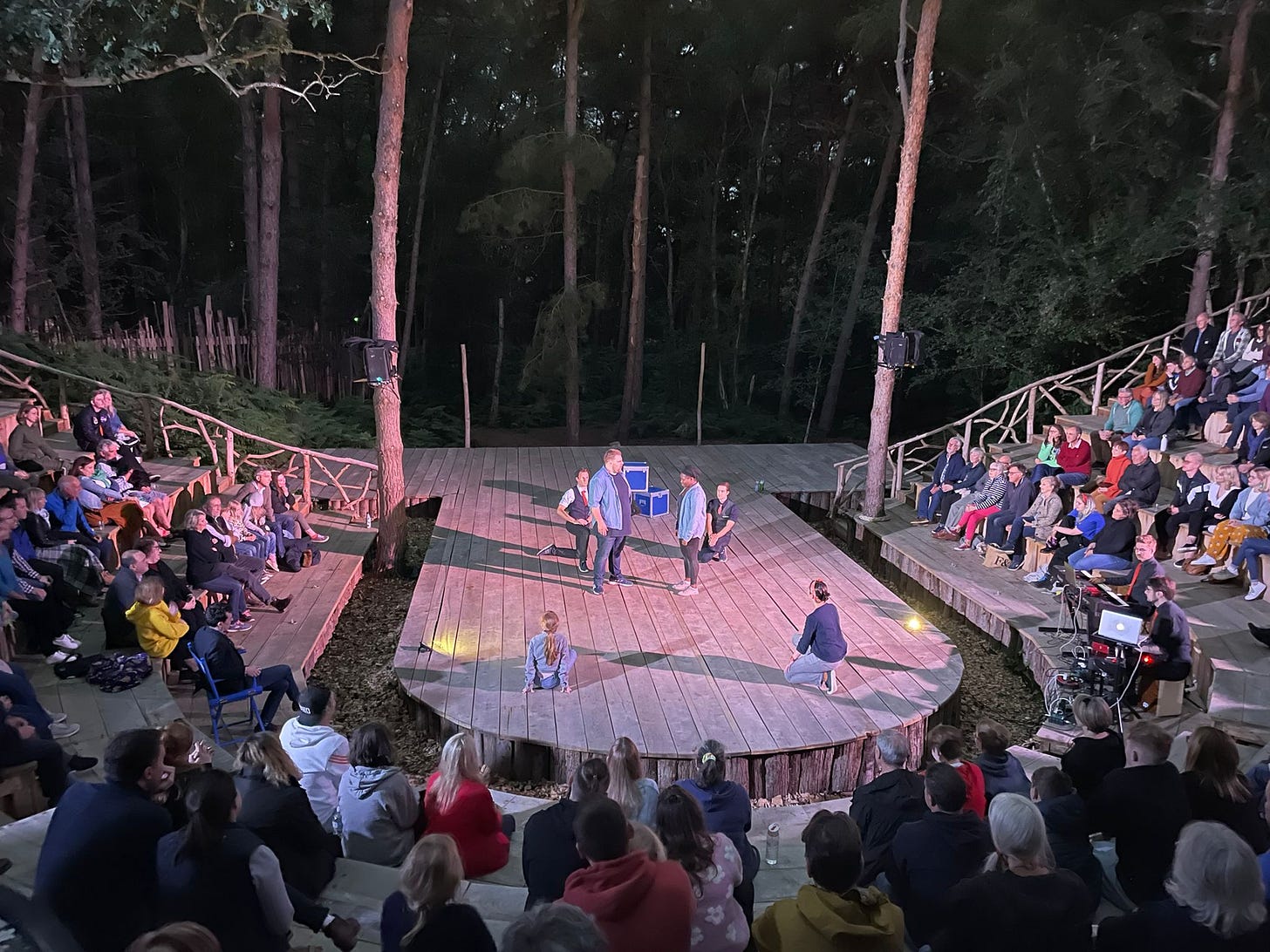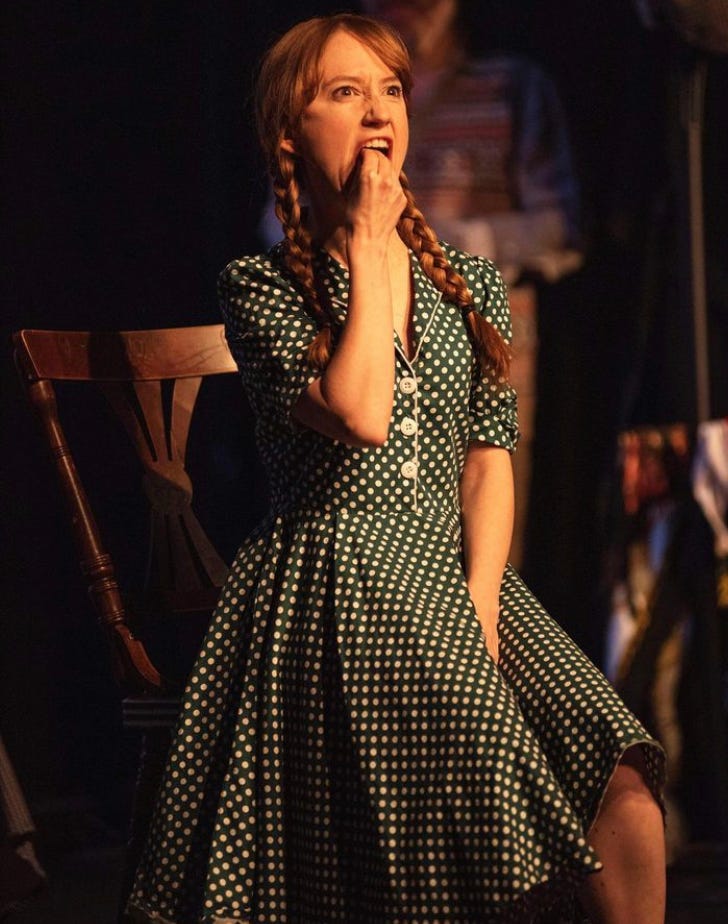When I’m not chipping away at scripted comedy I am invariably performing, teaching or thinking about improvisation. When I teach students to improvise a story together using one word at at time, I’ll ask them who owns the story. The answer is usually “It belongs to both of us.” This is true. In improvisation, a story is never owned by own person alone, it’s always a collaboration.
For the past decade or more I have improvised in hundreds of narrative shows, with Showstopper! The Improvised Musical, Bumper Blyton, Mischief Movie Night, Storybag, Oh Yes it is - The Improvised Pantomime, London Improvathons, These Folk and on occasion Austentatious. In these shows our characters have been all over the world, from a chip shop in Sheffield, to the lost city of Atlantis, to the inside of a saxophone. We’ve loved, we’ve killed, we’ve died and been reborn, and lived a thousand lives. How lucky we improvisers are to go anywhere that imagination allows and to be anyone, free from the tedious shackles of casting type!
Every now and again I miss other types of improv and wish I could improvise a show without worrying about the fate of the various characters involved. There’s freedom in simply heightening and following game, without worrying too much about a story arc. On the other hand, improvised narrative can be incredibly free-form. Some improv groups might follow a set format (eg always doing a structured Hero’s Journey), but in the groups I’m in we don’t do that. It’s incredibly useful to know these story structures of course, so that you can have them in your bones (and handy when it comes to writing too) but you don’t want to be too beholden to them during a show. After all, who’s to say there’s only one way of telling a story? There isn’t, there are endless ways.
The thing that’s hard about improvising a narrative as a group of people, is, well….all the people. So many people, each with their own brilliant instincts and points of reference and hopes and desires. Sometimes the hive-mind kicks in and everyone feels like they’re on the same page, but equally often, everyone has a slightly different idea of where the story is going. This is the monumental challenge of narrative improv: to shelve ideas, elegantly and immediately, and tune into your scene partner’s idea instead, while moving forward together. In Showstopper we sometimes describe story as a slippery eel, it’s hard to get a handle on it. Occasionally it’s a swift and biddable dog, but not very often. When you add in; audience reactions, tweets, the contribution of (in our case) The Chair*, things that might emerge organically in a song, the whole thing becomes utterly unpredictable. This is what makes it exciting but also hard. Take Act 2 of one of our recent shows for example. In the show in question (set in the world of mini golf) a jealous wannabe golfer stabbed a promising younger golfer. Near the end of the show we jumped forward in time and two improvisers made it apparent that the younger golfer had died. But did the improviser who stabbed him expect him to die? Did the improviser who was stabbed expect to live? Perhaps they thought it was only a flesh wound?! This is the brilliant thing about improvisation - you make an offer but you can’t control how it will be received, interpreted or built upon. How thrilling, and how hard!
*in Showstopper The Chair is the improviser who plays the role of the writer, and acts as a conduit/MC between cast and audience. It’s their job to keep wobbling the tightrope so that we are challenged, but also to steer the ship if needed. Easier said than done!!
Sometimes in Showstopper! the story comes easily as if we’ve written it together beforehand. Then it can feel like you’re flying, in a state of flow, moving set around as if you’ve been directed to do so, and responding instinctively in character rather than thinking even for a split second “I hope this is helpful for the story”. When story comes easily it’s because we’ve invested in the relationships between the characters and/or because the plot isn’t too complicated. It’s almost impossible to be simple in improv though! There are too many sparkling ideas.

In my experience the one thing that remains constant in improvised narrative is that characters are emotionally changed throughout, just as they would be in many novels, plays, films or musicals. This is in contrast to a non-narrative type of improvised format in which a character’s point of view usually stays the same. There are of course exceptions. There are some non-narrative shows in which a character is changed by the end. As in every area of the arts there are no hard and fast rules, and if there are, then brilliant people have broken them.
Essentially though, if none of the characters are emotionally changed within an improvised narrative then it will be a struggle for the performers, and runs the risk of being either dull or glib. As in life, characters should care about things, about each other, about themselves, and will emotionally react to whatever is thrown their way.
So if you are improvising a narrative then make stuff matter. Whether the story is a gentle unfolding of relationships, or a fast spy thriller, make it matter, care about the characters you are creating, and help them to care about each other as well.
News
I am running an 8 week improv course from October 28th exploring how relationships and characters help to inspire and build narrative. All the good stuff! Click here for details and to book your place.





